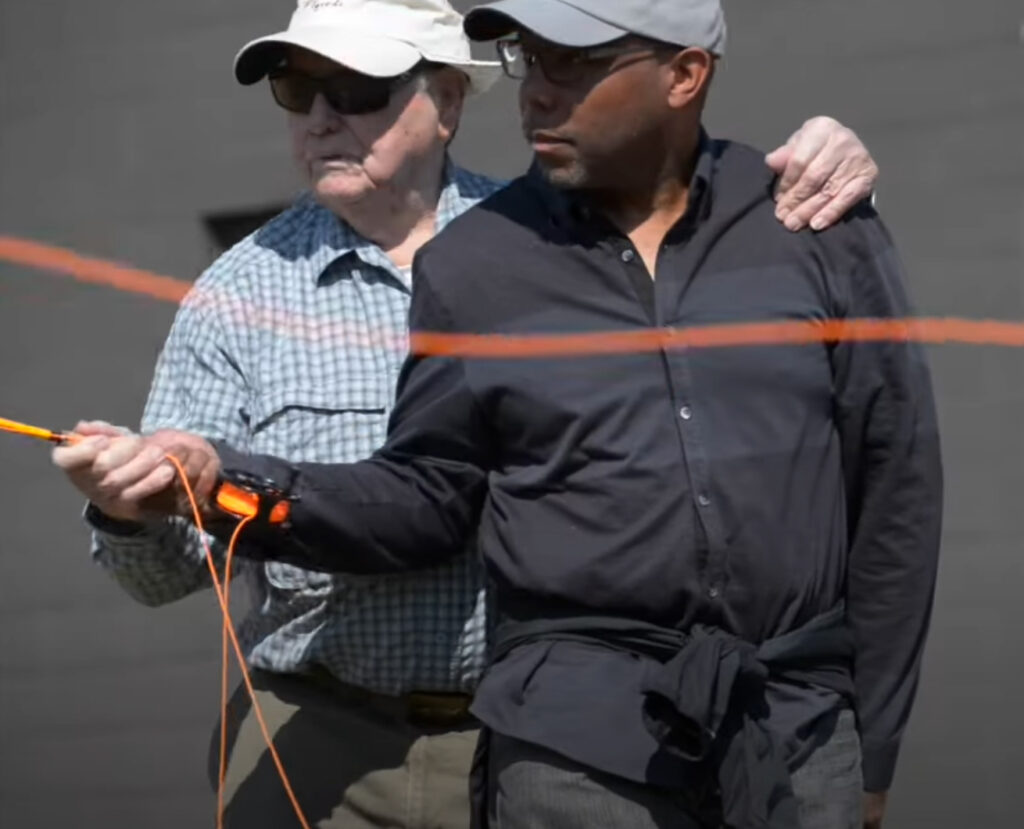
Lefty Kreh on Bending the Wrist in Casting
ATTENTION CASTING GEEKS
I have to start with saying: If there is anything I have realized in almost twenty years in this sport, there’s a geek for every single subject that falls in the category of fly fishing. There are fly tying geeks, gear geeks, you name it and fly fishing has a geek squad dedicated to finding and stamping out or praising the information they find – and their sources.
I have found that I am anything but a single category “fly fishing geek.” I love and enjoy the entire sport, its enthusiasts, eccentrics, and yes its categorical geeks. That is not necessarily a good thing for my sleep time. Because I can find something from one of the gods, that I learned along the way – that disagrees with Lefty’s teachings, or something that I absorbed from some other fly fishing god or disciple and it disagrees with something else I learned … it is a vicious bedtime only solved by melatonin many nights.
AI is My Friend
I am finding another sleep aid with ChatGPT’s honing in on my interest over time – fly fishing. And the other AI’s I use are doing the same … while I sleep. So instead of crafting a response to this video, I really took the time to watch it. First, Flip Pallot and Brian Fleschig never said they were demonstrating the Lefty Kreh cast. EMPHASIS ON THAT! And maybe I should’ve stopped there?
So, I immediately reframed my disagreement with the wrist bending aspect of a fly cast. They can bend their wrists until their elbows turn blue, and they eventually will … but the cast they are showing is somewhat credited to Jim Green . and looks a lot like a Joan Wulff cast. I think the Wulff Cast is pretty right for women, simply because of physique and a couple of attributes men lack. That’s another topic for another AI sometime down the river.
Here is what AI found on what it says Lefty Kreh said about bending the wrist during the cast:
Lefty Kreh emphasized that while some wrist action is necessary in fly casting, it shouldn’t be the primary driver of the cast. He advised against bending the wrist excessively, especially during the backcast, as it can lead to an inefficient and inaccurate cast. Instead, he advocated for a strong, level backcast with minimal wrist movement, followed by a controlled forward cast with a slight wrist “break” to propel the line forward.
Here’s a more detailed breakdown:
- Avoid Excessive Wrist Bending:
.
Kreh stressed that a stiff wrist, particularly during the backcast, is crucial for a good cast. Bending the wrist too much on the backcast can cause the rod tip to travel in a large arc, resulting in a wide, inaccurate forward loop. - Wrist Action in the Forward Cast:
.
While the wrist should be relatively still during the backcast, a small amount of wrist action is needed in the forward cast. This wrist “break” helps to initiate the forward movement of the rod tip and create a tight loop. - Focus on Arm Movement:
.
Kreh emphasized that the primary force in fly casting should come from the arm and shoulder, with the wrist acting as a guide and final point of power application. - Use the Wrist Strategically:
.
The wrist should be used to help guide the rod tip through a horizontal window of movement during the forward cast. This allows for a more controlled and accurate delivery of the line.
Lefty Kreh’s approach to wrist movement in fly casting emphasized using the body and forearm, with minimal wrist flexing, particularly for beginners and to prevent injury.
Here’s a breakdown of his perspective:
- Minimize Wrist Flexing: Kreh suggested that excessive wrist movement can lead to issues like dipping the rod tip too low on the backcast, causing casting problems and potentially even injury, similar to tennis elbow.
- Utilize Body and Forearm: His preferred technique involved keeping the elbow lower, rotating the upper body, and using forearm motion, particularly to generate power and extend the rod farther back on the backcast.
- Slight Wrist Flex on Stop: While minimizing overall wrist movement, he did suggest a slight flexing of the wrist combined with a haul (pulling the line with the non-casting hand) on the final speed-up-and-stop to direct the cast and form the loop.
- Discipline is Key: Learning when and how to use the wrist is crucial. Kreh might suggest focusing on the overall casting motion driven by the body and forearm, and then incorporating slight wrist movements at the appropriate time to refine the cast.
In essence, Lefty Kreh advocated for a casting style that relied more on a controlled, powerful motion from the body and forearm, with a disciplined and minimal use of the wrist to avoid potential problems and achieve a better cast.
PUBLISHER NOTES: I hope this puts the wrist to rest, literally and figuratively! While I felt like saying something, sometimes the ChatBots do a much better job of FACT without EMOTION, and this was one of those times. A fly fishing cast is such a building block to your enjoyment that I didn’t want to GEEK OUT too much. I will conclude by saying, I think there is a time and place for the cast they demonstrated, but not on the Texas Salt Flats or anywhere wide open – like TEXAS … just sayin’. I promise I will leave this microscopic topic alone now!
